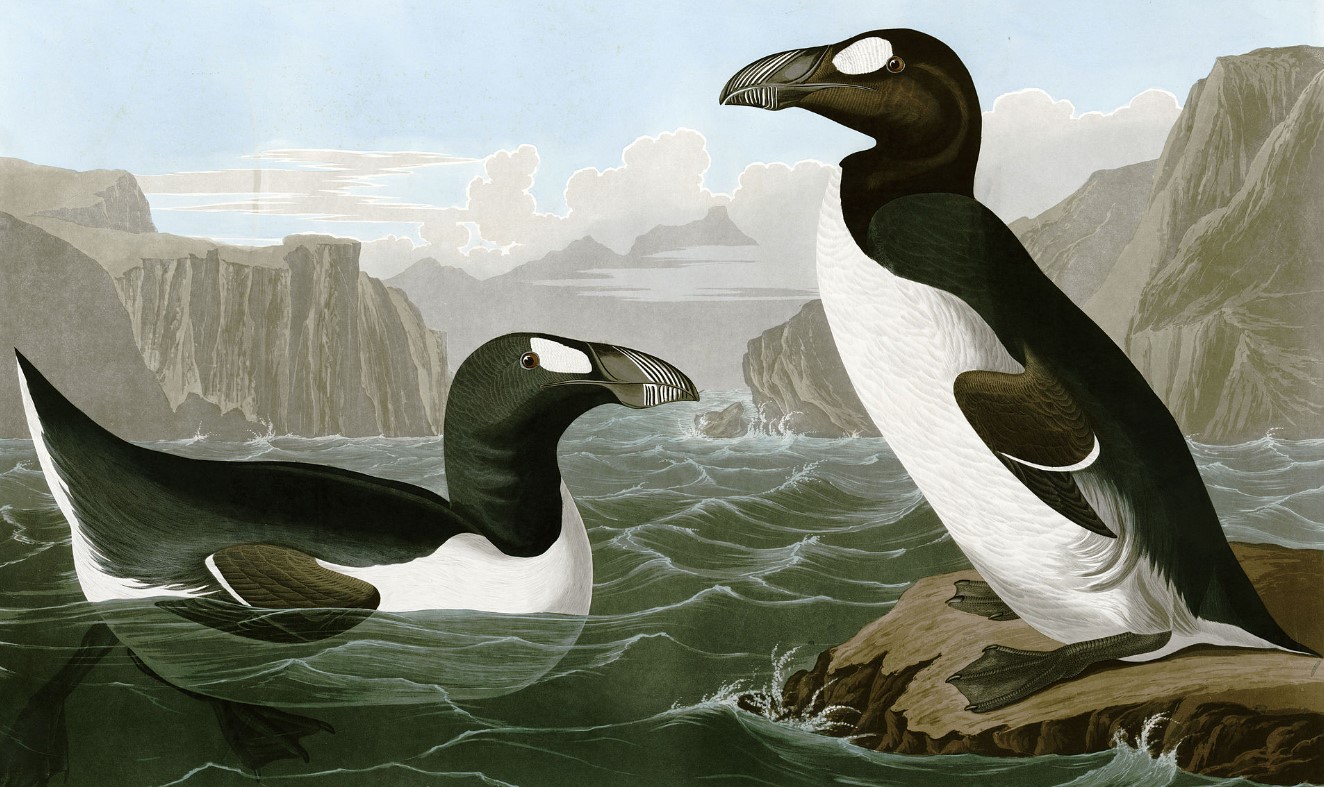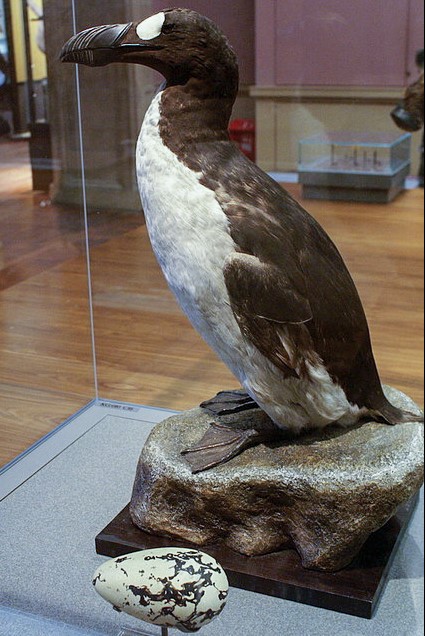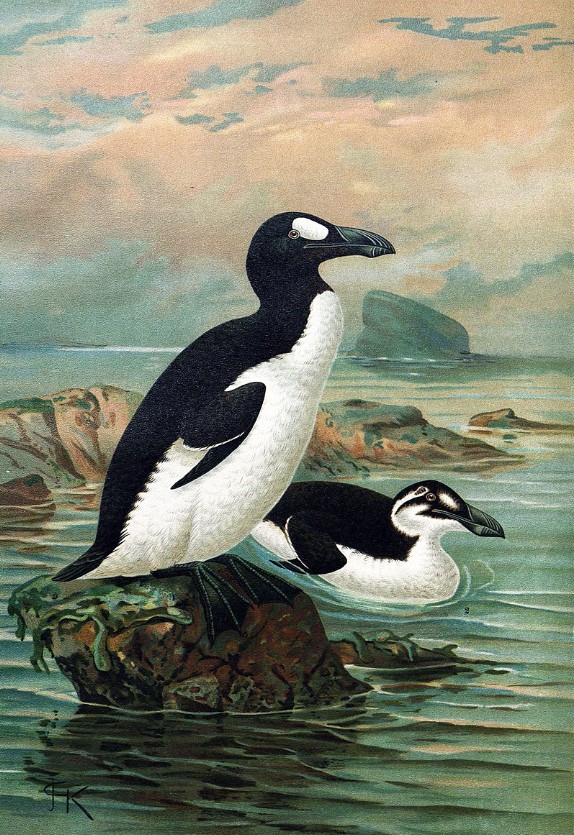





The Great Auk is an extinct species of alcid that was flightless, bred in colonies on the rocky islands of the North Atlantic, and left its range only for breeding. It was also called the garefowl. They went extinct because they were killed by hunters for food, down, and also as fishing baits. The last specimens were killed in Eldey Island, Iceland in June 1844.
The great auk had a black back and head, a white front, and a large white spot between the bill and eye which was developed in the summer. Males and females were similar in plumage, although there is evidence for differences in size. Their bodies were approximately 30 inches long and their wings, which were used for swimming, were less than 15 cm. In winter, this bird had a wide, white band and a gray line of feathers that stretched from the eye to the ear. In summer, its chin and throat were blackish-brown, the inside of the mouth was yellow, and its large, white spot formed between its bill and eye. The legs were far back on the bird's body, which gave it powerful swimming and diving abilities and also made it stand erect on land.
The great auk was the last species in the genus Pinguinus. It was also the only alcid to be flightless, as most of them could fly. They had few natural predators but they were preyed on mostly by polar bears and eagles. Their nearest-living relatives are the razorbill auks. They fed together in flocks and their main diet was mostly on fish. They also ate cod and many other crustaceans. They began mating from early to mid-May. They were believed to mate for life. Mated pairs had a social display in which they bobbed their heads and displayed their white eye patch, bill markings, and yellow mouths. Once paired, they nested at the base of cliffs in colonies. Female great auks would lay only one egg each year. The egg was yellowish white to light ochre with a varying pattern of black, brown, or greyish spots and lines that often were congregated on the large end. When the chick hatched, it was covered with gray down. The parents took turns feeding the chick. The young bird took only two or three weeks to mature enough to abandon the nest and land for the water, typically around the middle of July. The parents cared for their young after they became fledglings.
Great auks didn’t have an innate fear towards humans and that was what led to their extinction. They were killed by hunters for food and also bait for fishing. In North America, down from eiders was preferred but once they were about to go extinct, people started killing great auks for their feathers. They were also captured as specimens for museums and private collections. Sailors also introduced rats onto the islands, which ate the eggs from their nests. The last known specimens were killed in June 1844 at Eldey Island, Iceland. There is an ongoing discussion about the possibilities for reviving the great auk using its DNA from specimens collected.
There is an ongoing discussion about the possibilities for reviving the great auk using its DNA from specimens collected. This possibility is controversial.